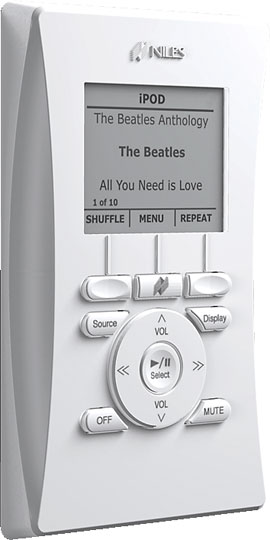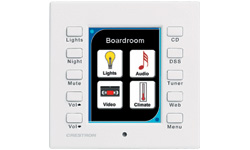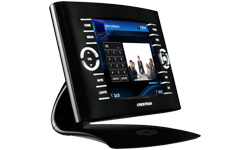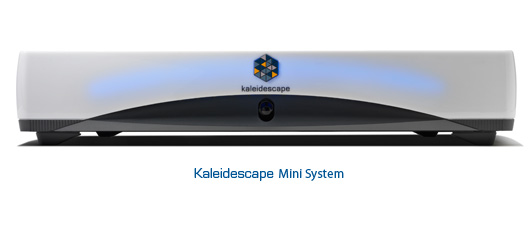Want to know if your system will be upgradeable in 10 years? Take a look at what the vendors your thinking of have done with the products they sold 10 years earlier. I believe that practically the whole of the residential electronics industry is ill-prepared for life-cycle technology support and the only providers are those who service enterprise, military and higher-education really have the proper demands placed upon them.

 On the left is Niles Audio latest keypad, on the right is their offering from 10 years ago. The old keypad is not supported on their new audio system. The new keypad is not supported on their old system. Could one possibly come up with a way to control an iPod and Pandora using their old keypad? Possibly, but it's not easy. And it can't be - Niles Audio, like Bose, Russound, Nuvo, Sonance and others - builds specific purpose audio systems that assume very specific uses and aren't designed to be expanded or revised. Because of that they are cheaper to develop and install but often are boat anchors as sources or needs change.
On the left is Niles Audio latest keypad, on the right is their offering from 10 years ago. The old keypad is not supported on their new audio system. The new keypad is not supported on their old system. Could one possibly come up with a way to control an iPod and Pandora using their old keypad? Possibly, but it's not easy. And it can't be - Niles Audio, like Bose, Russound, Nuvo, Sonance and others - builds specific purpose audio systems that assume very specific uses and aren't designed to be expanded or revised. Because of that they are cheaper to develop and install but often are boat anchors as sources or needs change.


On the left is a Crestron panel from 10 years ago, on the right, their newest - the TPS-6X. We can add Pandora, iPod, Sat Radio or ANY other source to the system on the left. We can also add on the latest TPS-6X to that same system without throwing out ANYTHING.
Ambleside is working on overhauling an old system right now. It's a mess. The home wasn't lived in for a while, some components failed and others became out of date. Several botched repair jobs later and now the system is unusable. This audio system was built with Crestron keypads + touchpanels which communicate to Crestron Control system. The control system in turn operates the sources, audio switcher and amplifiers.
Because it was built from flexible components sold by a firm that supports it's products, the system is now being upgraded to support iPod + Satellite radio. The broken hardware is being replaced but the entire refresh project has a budget of approximately 15% of the replacement cost of such a system....15% after 11 years is very, very inexpensive in the technology world.
This home's keypads, controllers, power supplies and other control system materials were discontinued long ago. But they are still supported - both on the phone and in the technology. We took keypads created before MP3 existing and have them controlling an iPod. One cannot do this with the technology sold by Russound, Niles, or any other audio system vendor using the components they sold in 2000.
Even today, almost all the vendors continue to obsolete their products. A friend asked me if he could run Rhapsody on his Control4 system. I looked into it and discovered that their original hardware - shipped less than 24 months ago - cannot run Rhapsody. Meanwhile, I can take 80% of the hardware of an 11 year old Crestron system and bring it up to current standards.
The resources necessary to deliver a COMPLETE product including continuous software upgrades, support, full lifecycle integration and correct coding is rare. For the majority of the electronic industry, the cost of replacement parts are cheaper than upgrading an old system. However, when it comes to a multi-room system, the costs of not having a flexible infastructure is demolishing to a home owner's budget. How bad is the damage? The inability for most systems to stay up to date results in a pathetic lifespan of approximately five years. This is not nearly enough time for an owner to thoroughly enjoy, let alone discover all of the wonderful applications their system can do.
If Sonos survives as a company, they might be an exception but other than them, no one in the AV industry is prepared for future media sources. Rhapsody, Pandora, last.fm, etc. will force the industry to create new keypads AND back-end systems...just like they have had to do with iPod + Sat Radio.
Crestron Electronics is a rare company in the consumer electronics industry. Like HP, IBM, Cisco, Avaya and many other enterprise technology companies, they put clients interests first, building systems for the future. Does anyone else in the industry equal them? Would you want to own a 10 year old AMX system? Not sure....
 Friday, April 24, 2009 at 05:13PM
Friday, April 24, 2009 at 05:13PM  Aaron Rosenbaum | Comments Off |
Aaron Rosenbaum | Comments Off | 





